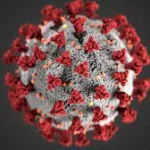If you could live a longer life with the vitality of your youth, would you? For decades, this idea has seemed like a distant fantasy, but recent research suggests it may soon become reality. Scientists at the University of Connecticut School of Medicine, led by gerontologist Dr. Ming Xu, have developed a treatment that not only extends lifespan but also preserves health and vitality, turning the aging process on its head.
Longer Life, but at What Cost?
Over the past century, advances in medicine and public health have significantly extended human lifespans. However, these additional years often come at a price: chronic illnesses such as cancer, diabetes, and cardiovascular disease become more common, accompanied by frailty and a decline in quality of life. Most current interventions focus on prolonging life, not necessarily improving health during those added years, leading to a prolonged period of decline at the end of life.
A New Approach to Healthy Aging
Dr. Xu and his team are challenging the notion that aging must be accompanied by deterioration. Their study, published in the August issue of Cell Metabolism, reveals a novel treatment that enabled a group of mice to live 9% longer — an equivalent of 79 additional days — while maintaining their physical strength and vitality until the very end of their lives.
The secret behind this breakthrough? The treatment involves targeting and removing inflammatory cells from the body, which are known to contribute to aging and age-related diseases. By eliminating these harmful cells, the researchers were able to not only extend the lifespan of the mice but also improve their overall health. The treated mice retained their grip strength and walking speed, markers of physical vitality, even as they aged. In human terms, it’s akin to an 80-year-old running with the energy of someone half their age.
The Mechanics of the Aging Treatment
What distinguishes this research is the comprehensive approach taken by Dr. Xu and his team. Rather than focusing on a specific endpoint, they conducted a longitudinal study, meticulously tracking the health, grip strength, and walking speed of the mice from the age of 20 months (approximately 60 in human years) until their natural death. This method allowed the researchers to observe the effects of the treatment over the entire lifespan of the mice, providing valuable insights into how their physical function and overall health evolved.
The findings were remarkable: even though the treated mice lived longer, they were healthier and less frail at the time of death compared to untreated mice. “We are all very excited about this finding,” says Dr. Xu. “It demonstrates that we not only extend the lifespan, but indeed extend life with good health in mice, which is a key goal for the aging field.”
Moving from Mice to Humans: The Future of Aging Treatments
The study involved two groups of mice: one received monthly treatments to remove highly inflammatory cells expressing a specific gene known as p21, while the other group served as a control. The oldest treated mice lived to be 43 months old — the equivalent of 130 years in human terms. On average, the treated mice not only lived longer but also maintained better health throughout their lives.
The big question now is whether these findings can be translated to humans. If successful, this treatment could add 8 to 10 additional years of healthy aging, revolutionizing how we think about getting older. Future studies will need to explore various factors, such as dosage, treatment duration, and the impact of this intervention across different ages and genetic backgrounds, to determine its potential effectiveness in humans.
Hope for the Future
This groundbreaking research offers a glimpse into a future where aging does not necessarily mean frailty. Supported by the NIH National Institute on Aging, American Federation for Aging Research (AFAR), and Hevolution Foundation, the study has laid the foundation for a new era in aging research.
Innovative studies like this one inspire hope that we may one day live longer, healthier, and fuller lives, where the later years are filled with vitality and not marked by decline. As researchers continue to explore this promising treatment, the prospect of living long and dying healthy may soon move from fantasy to reality.











